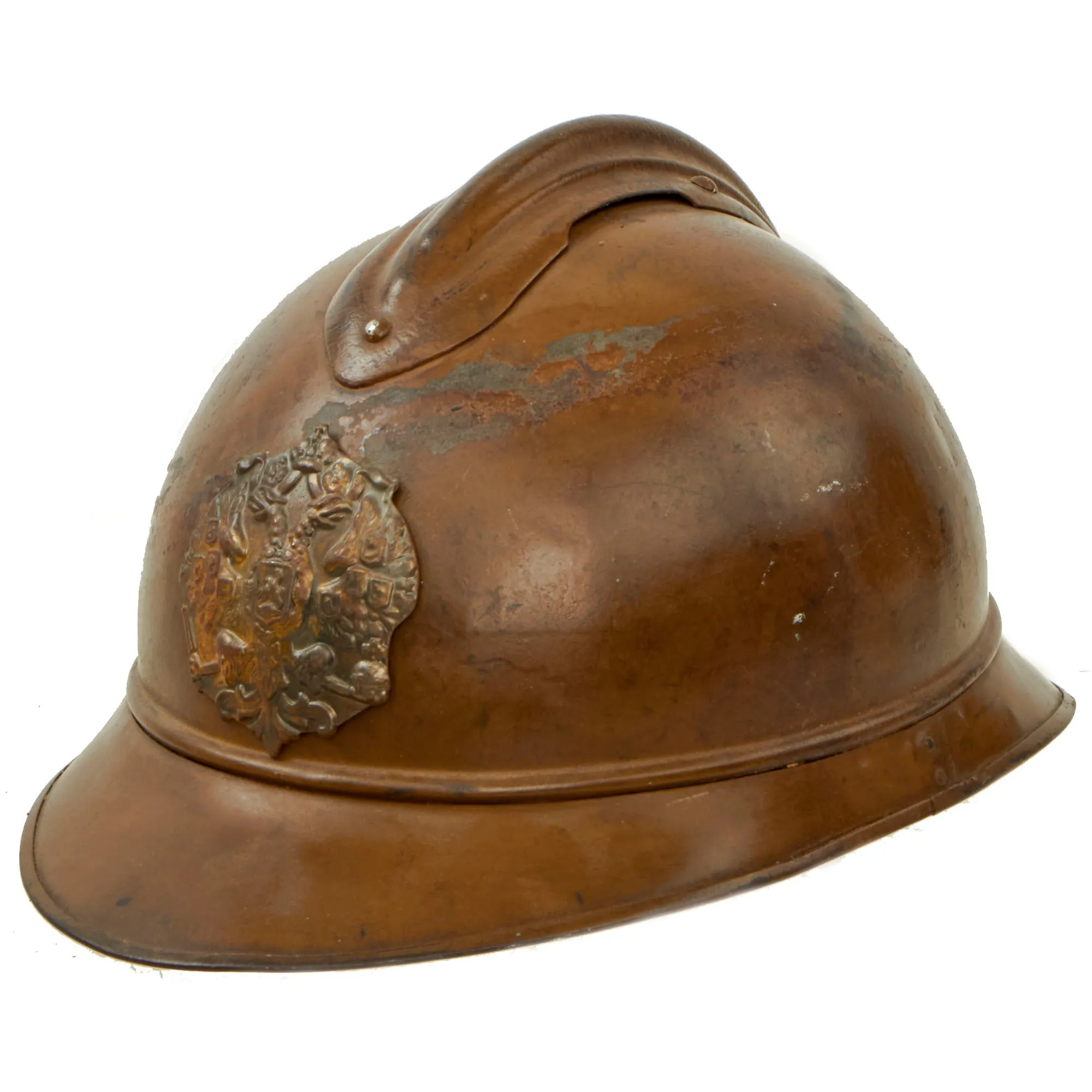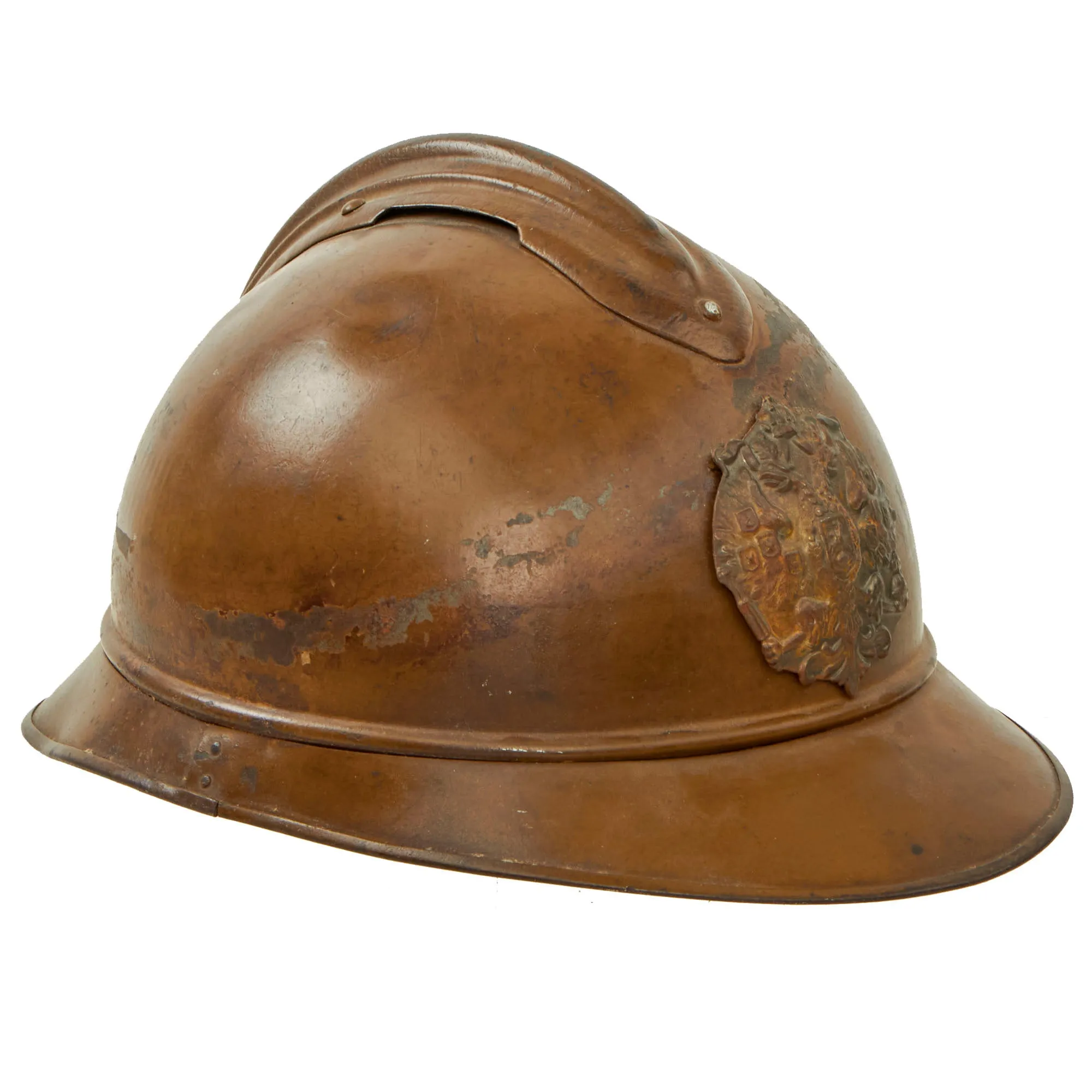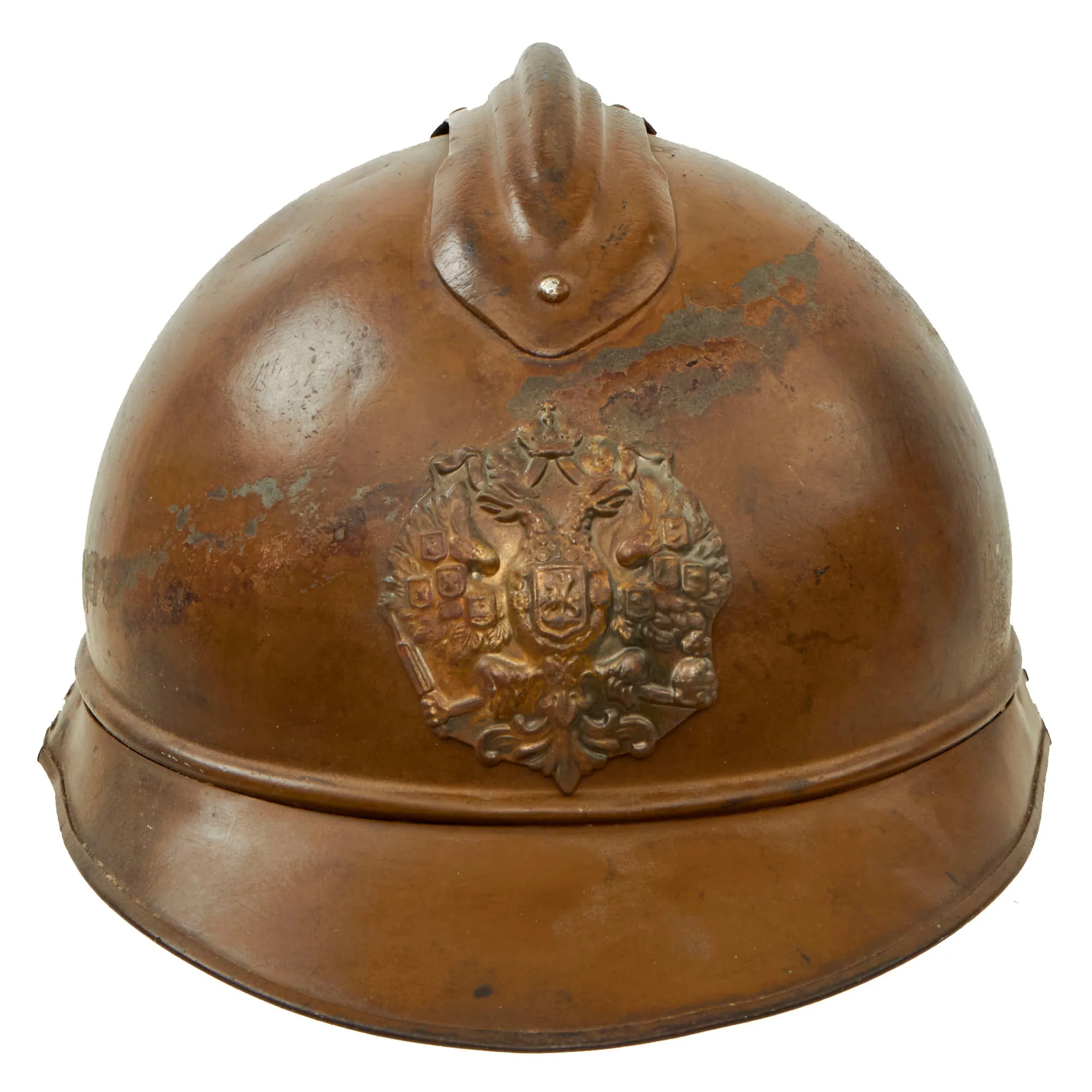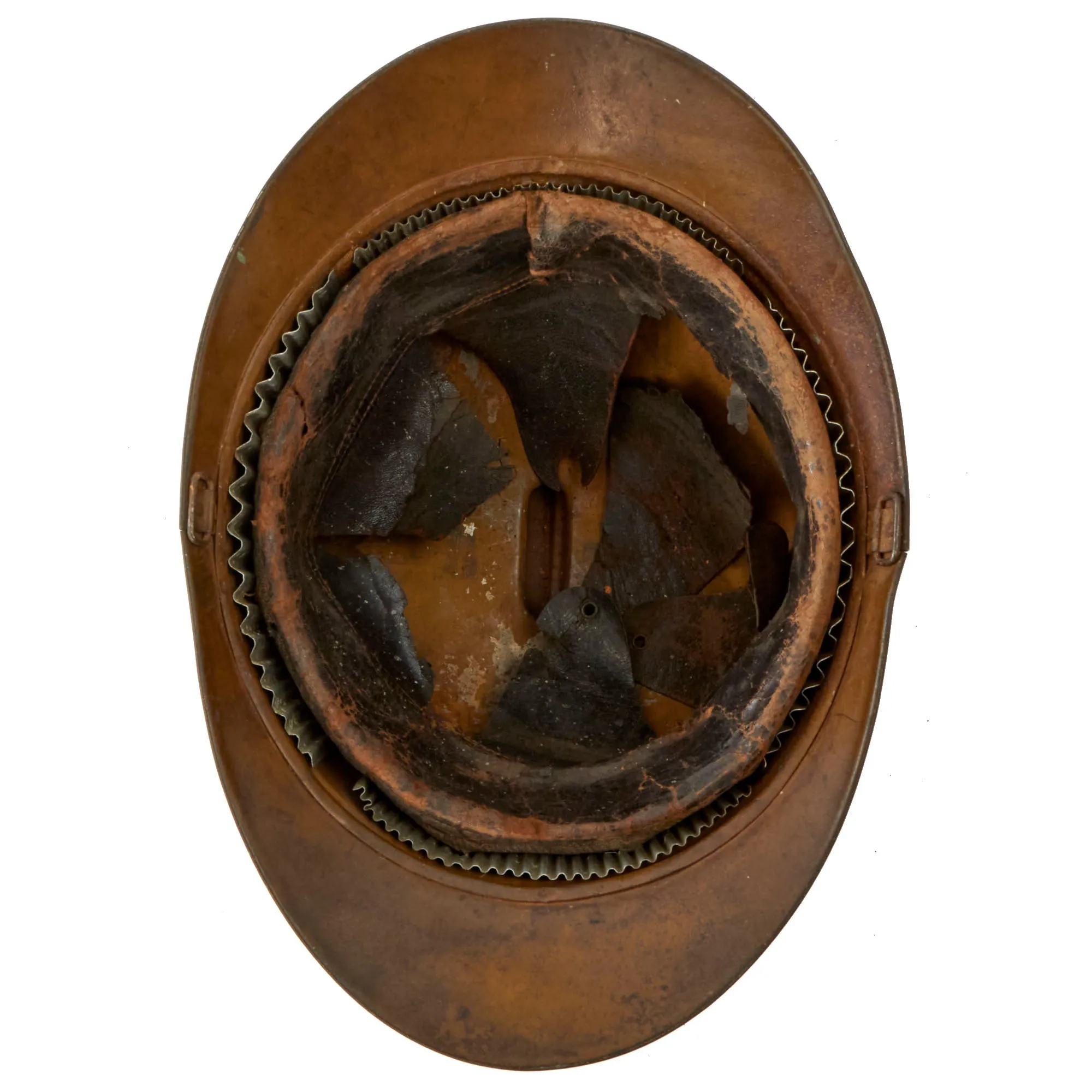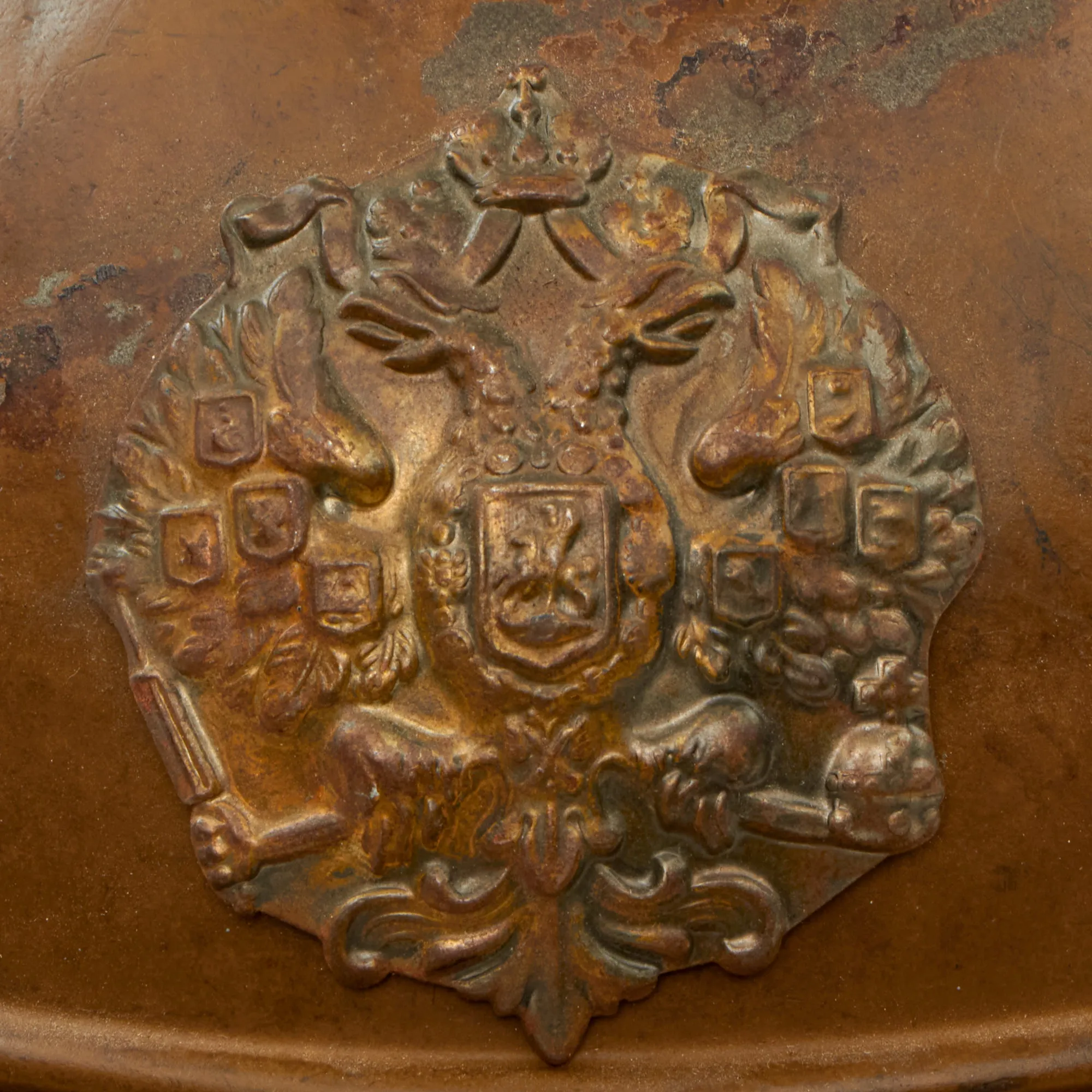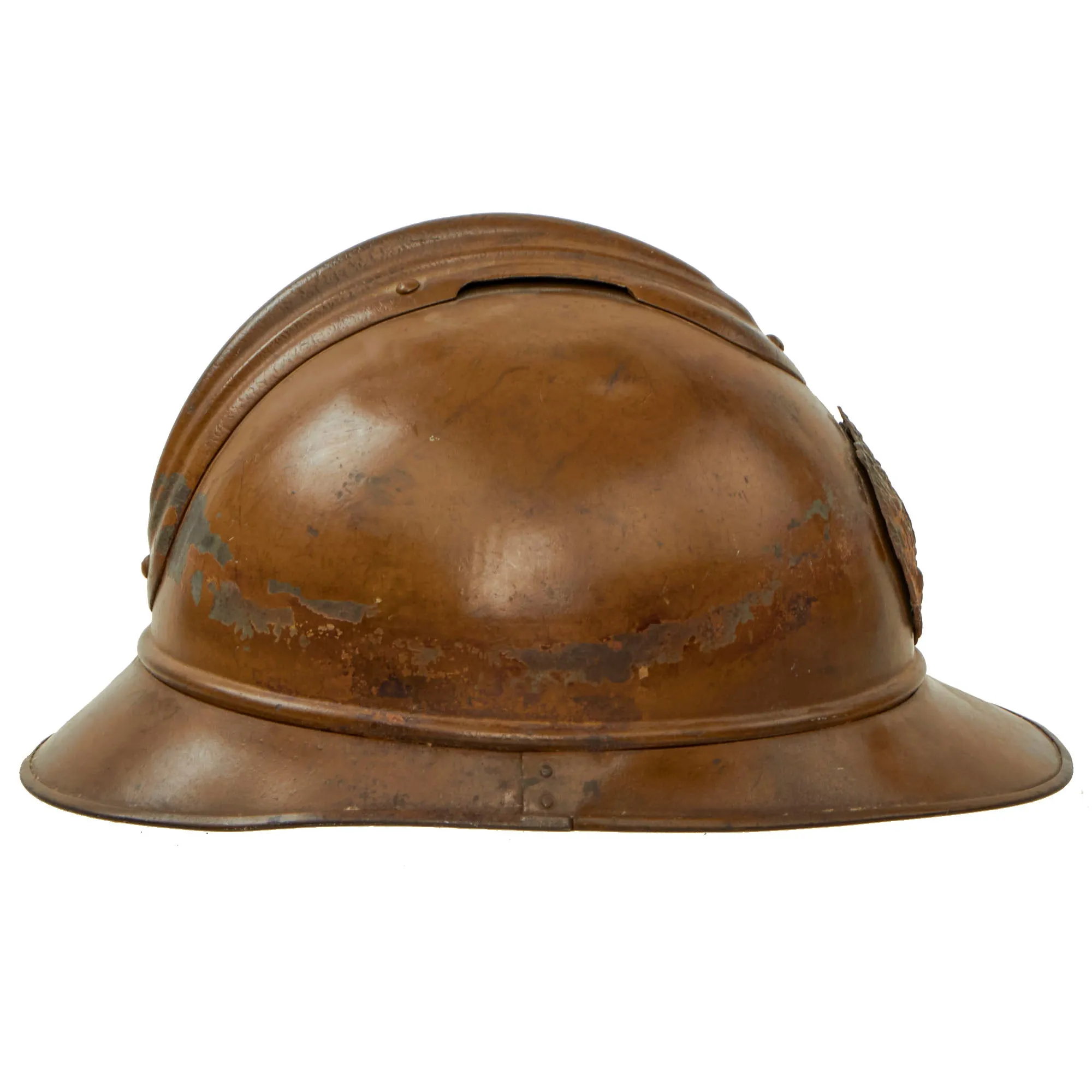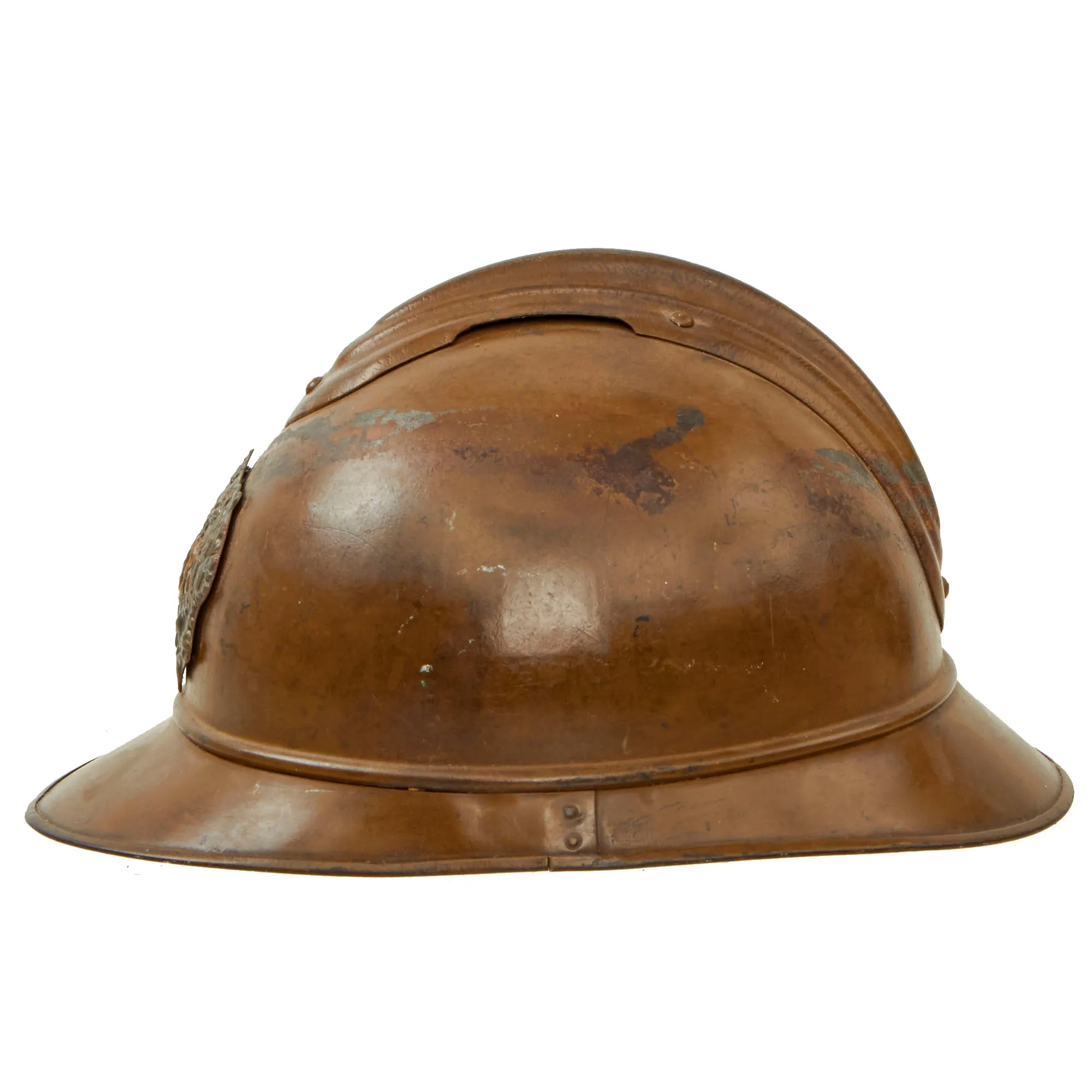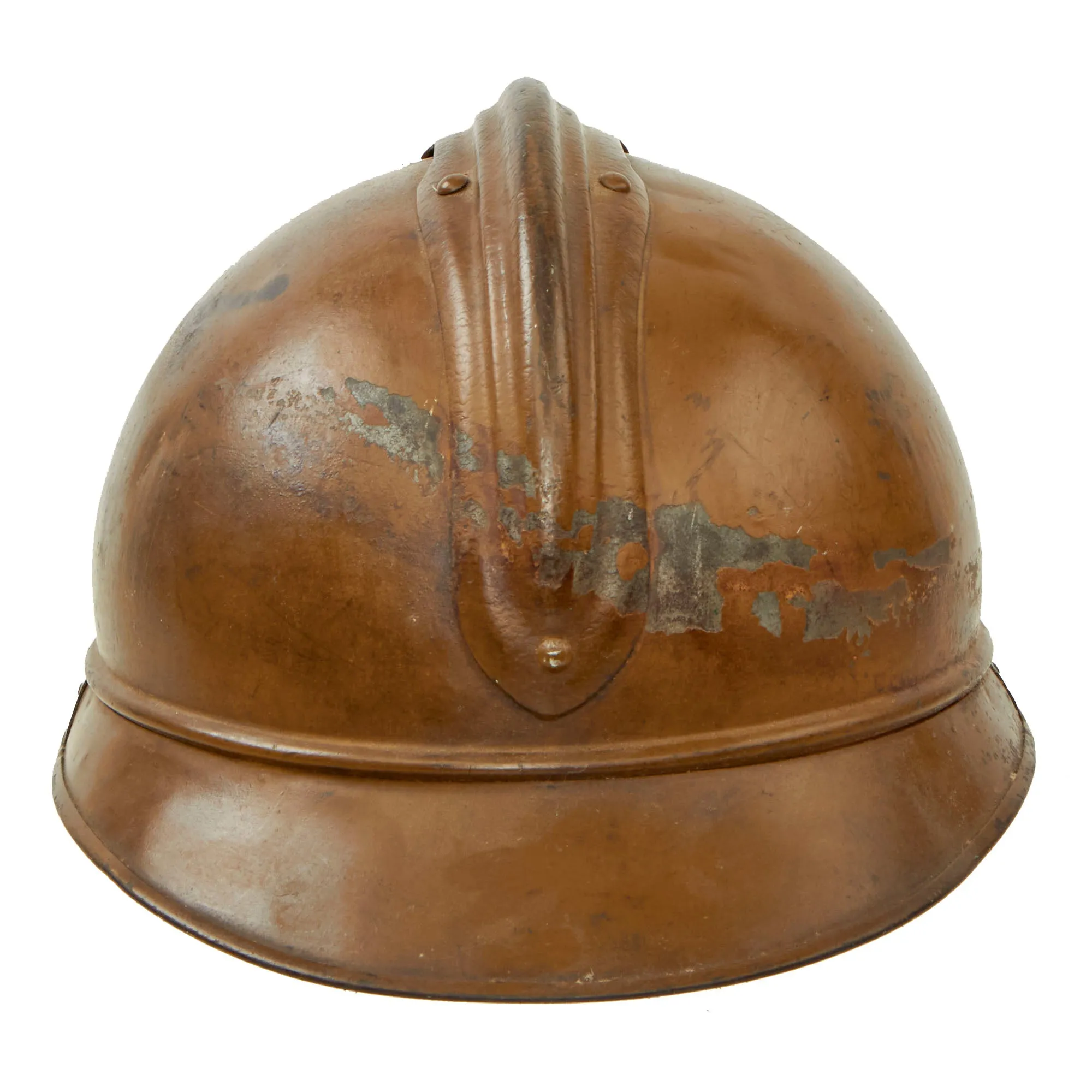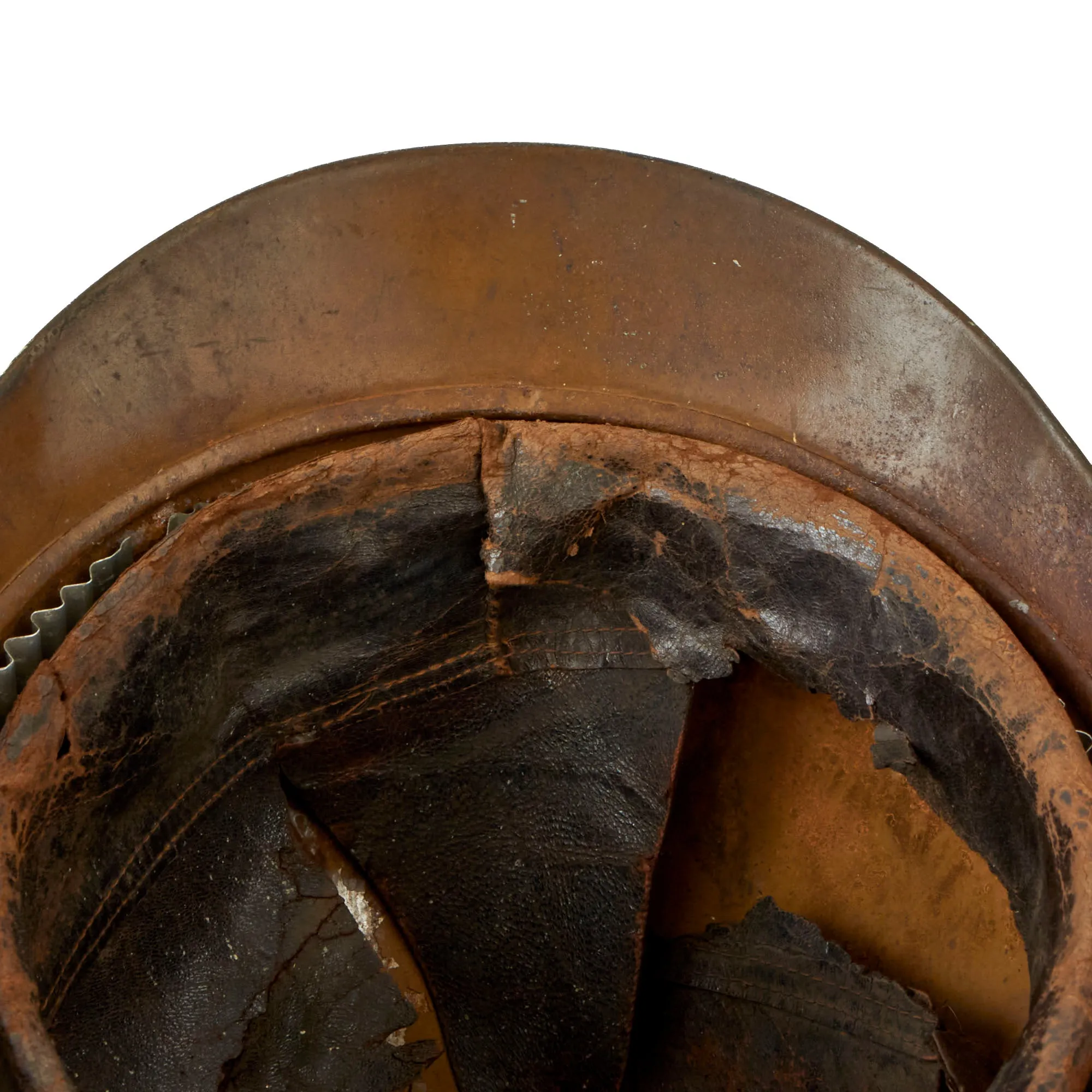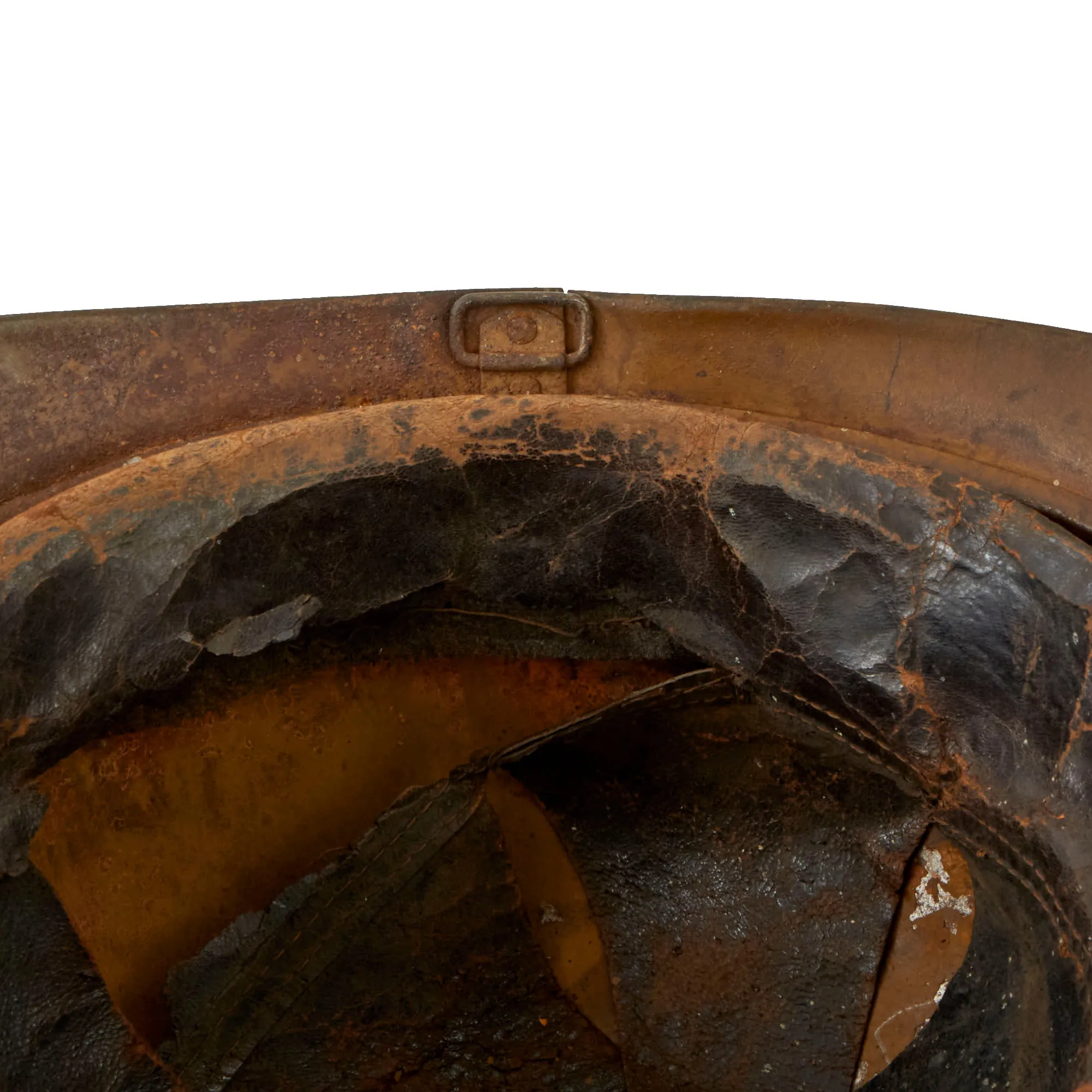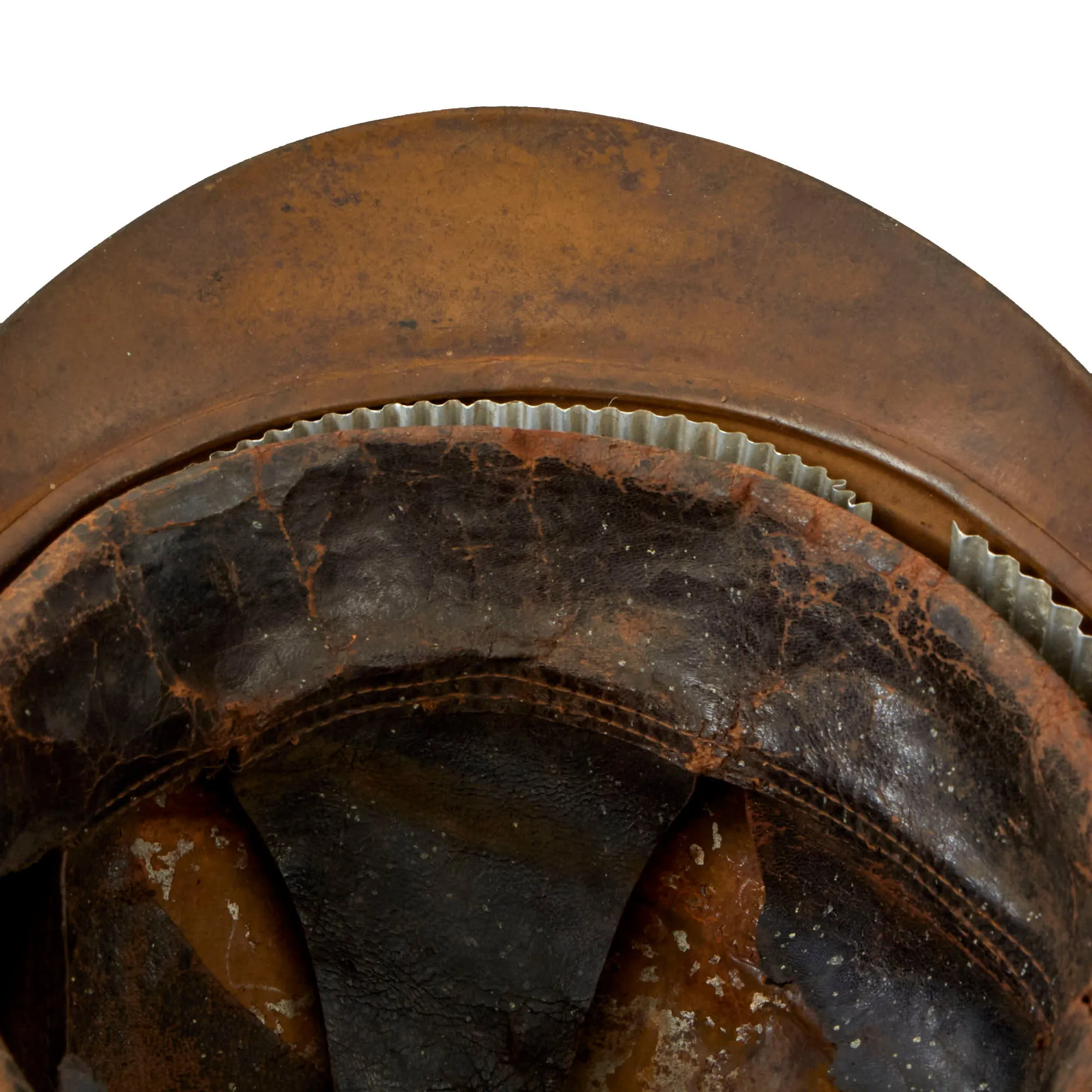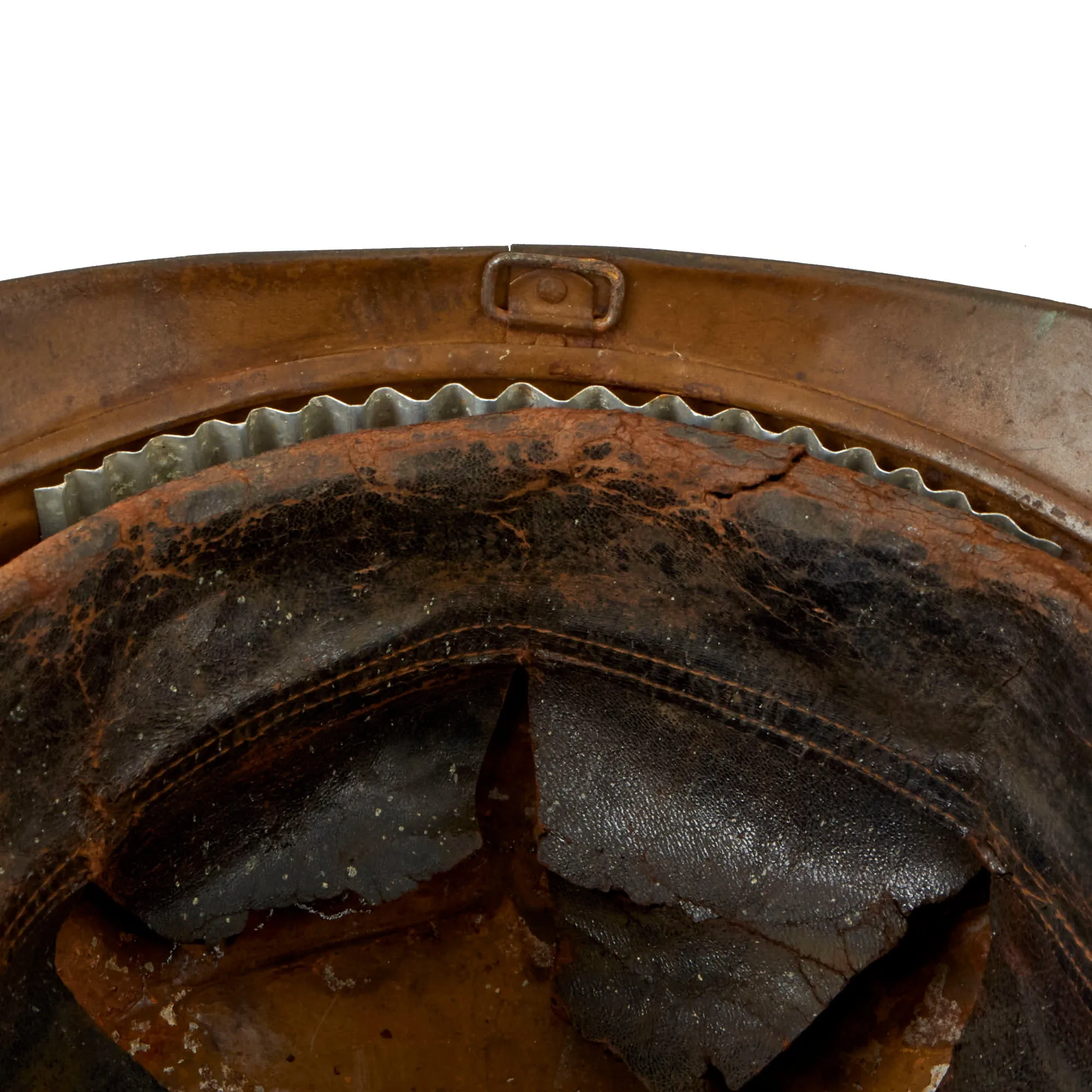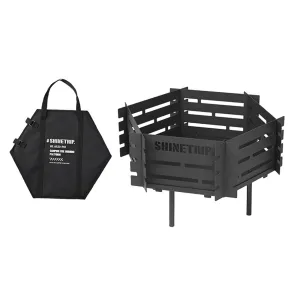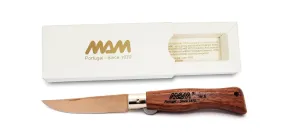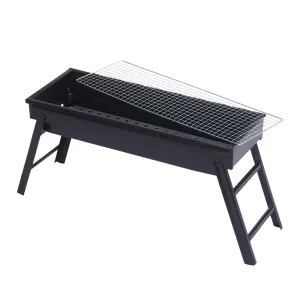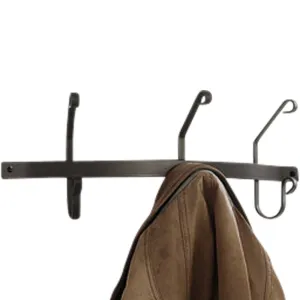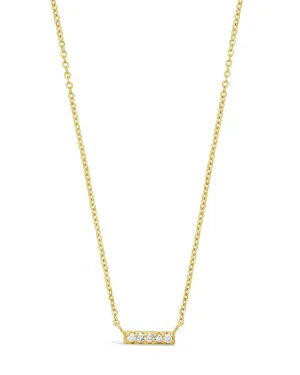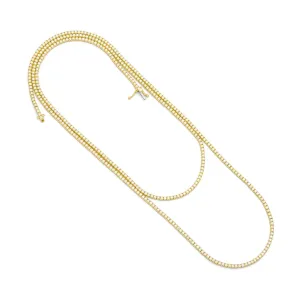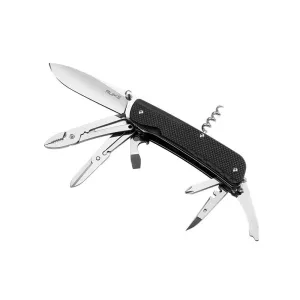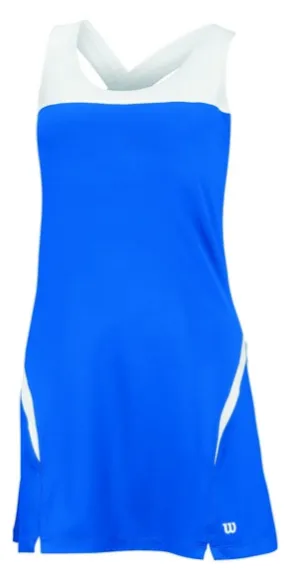Original Item: Only One Available. This is a fine example of an incredibly rare early issue WWI Russian, French-produced, M-1915 Adrian Helmet. This is the second we have had the pleasure of offering!
The Early Russian helmets were Horizon Blue with Moutarde (Mustard) painted Badges, as they were supplied by the French. It was not until later that the remaining 175,000 helmets were supplied in Moutarde paint like this example.
This first 1916 order of helmets which were received by the Russians were no different than those issued to French troops; They were painted in the same Horizon Blue as the standard French issue helmets. In addition, the Russian Adrian helmets had their Russian Double Headed Eagle badges sent not applied to the helmets, but packed separately. The badges were supplied painted with the French Mustard colored paint. Therefore, the first 250,000 Russian Adrian helmets were painted Horizon Blue with Mustard painted badges applied.
This is a very nice example of one of these very rare helmets. Following 1917 most of the badges were removed and destroyed. Furthermore, many of these helmets were reconfigured for use into the 1920s and 1930s, very few unaltered WWI issue Russian helmets exist today.
Underneath the badge the helmet exhibits a “ghost” of the badge, indicating that it had undoubtedly been on this helmet for a very long time. Unquestionably a genuine article! We made no attempts at removing the badge to not cause any further damage to the interior of the helmet.
The helmet retains a high amount of its original Mustard Paint, and the badge matches in condition and wear as well. The liner is extremely worn and torn with fingers missing, but still retains the original corrugated aluminum spacers. The original chinstrap is no longer present.
A gorgeous example of a very rare helmet! Ready for display!
The French Adrian M-1915 Helmet in Russian Service
As the Great War raged across Europe in the winter of 1916, a steamship named St. Peter docked at Arkhangelsk, a northern sub-arctic port town in the Russian Empire. The ship had come from Brest, France and carried in it’s hold 15,000 French steel helmets. These helmets were part of an experiment, destined for Russia's Imperial army. Like all armies on both sides of the Great War, Russia was losing an unacceptable number of men due to head wounds. Something needed to be done. Unfortunately while the other armies in Europe had already begun developing their own steel helmets, Russia had not. Russian Military Officials had taken note of the effectiveness of the new steel helmets being used by their French Allies and sought to procure a small number of these French helmets for an experimental field trial. An order was issued by the Chief of Staff of the high command on October 22, 1915 to purchase 15,000 French helmets. The order was passed to A. Ignatiev, the Russian military agent in French who negotiated the sale of the helmets from the French quartermaster for 75,000 francs. On November 10, 1915 the Main Directorate of the General Staff issued a communique to the Imperial Armies Main Quartermaster’s Department that one division of the regular army was to be equipped with French helmets on a trial basis.
The French steel helmets were known colloquially as Adrians so called for its developer Colonel Louis Auguste Adrian. Colonel Adrian had been struck with the idea for a protective steel helmet after a conversation with a wounded French soldier who had survived an almost certain fatal shrapnel wound by placing a cooking pot lid under his wool cap. From that conversation the Colonel would go on to design the French army’s first steel helmet, one that would dramatically reduce head wounds and save countless lives. After arriving in Russia, the Adrian helmets were sent by rail to Rezhitsa in modern day Latvia where they were received by the Northern Front’s quartermaster. By July of 1916 the helmets were finally distributed to Russian soldiers in the field and the experiment began. The first to receive them were members of the 5th Army.
The helmets received by the Northern Front quartermaster were no different from the version worn by French Soldiers. The helmets were painted Horizon blue which matched the French combat uniform but would clash with the khaki uniforms worn by the Imperial Russian Army. There was one small difference, at the request of A. Ignatiev, that the helmets were not fit with French insignia on the front. Even before the helmets were issued to the first of the Russian troops, the helmets were already receiving criticism. Despite a French study which showed that wearing of a steel helmet eliminated three quarters of all head wounds, on March 12, 1916 the Chief of Staff of the High Command issued a resolution against their use. The Tsar himself had ruled against the use of steel helmets by the Imperial army believing it would diminish the soldier's martial appearance. Due to the Tsars intervention, the purchase of further helmets was stopped.
Despite the Tsar’s intransigent on the use of a steel helmet by his armies, other members of the Russian government were not willing to let the idea die. During the spring and summer of 1916, members of the Russian State Duma as well as the Special Council for State Defense visited the other Allied states of Belgium, Great Britain, France, and Italy to discuss effectiveness of the steel helmets their nations wore. Most of these nations had been wearing steel helmets for over a year and had thoroughly documented their safety record. The council was impressed with the findings and decided to petition the Chief of Staff to the Commander-and-Chief M.V. Alekseyev to recommend the Russian Army be equipped with steel helmets. The council also appealed to the Tsar directly to change his previous decision to let the army be equipped with steel helmets. The extra effort by those advocating the use of steel helmets was not wasted. After considerable argument, the Tsar reversed his decision and allowed for the purchase of steel helmets from the French to move forward.
With permission from the Tsar granted, Alekseyev wrote to War Minister D.S. Shuvaev requesting the immediate purchasing of 2 million Adrian helmets. As a sign of the urgency for the situation, perhaps with the fear the Tsar might rescind his permission, Alekseyev requested that the purchase move forward without waiting for the results of field trials being conducted by the 5th army. The purchase order was again forwarded to A. Ignatiev, Russia’s military agent in French who negotiated an agreement with France for the purchase of the 2 million helmets. Under the agreement, the first 250,000 helmets were painted horizon blue and were fitted with the French RF (République française) frontal insignia. It was agreed that these helmets would be shipped on the first available freighter. While the subsequent helmets were shipped in 18-20 thousand lots with the expectation that they would arrive in Russia before the end of the shipping season. The first lot of helmets were received in early October, 1916. It appears that no time was wasted issuing them out to the troops at the Darnitski depot. Kiev reported taking delivery of 146,000 helmets October 19, 1916.
Two million helmets would not be enough to equip the Russian army and by September 22, 1916 Commander-and-Chief M.V. Alekseyev proposed that another 1.5 million Adrian helmets be purchased from France. The shipping of helmets from France to Russia proved to be problematic because Russia’s ice choked port facilities which made deliveries problematic during winter and early spring. Aside from natural elements, German U-boats prowled the northern shipping lanes. Three freighters carrying a combined total of 160,000 helmets were sunk by German U-boats in 1916 and 1917. Unfortunately, even after the helmets were delivered, there were other problems. On January 12, 1917, an accidental ammunition explosion at the port of Romanov-on-Murman destroyed a large delivery of Adrian helmets. Those helmets that did arrive were sent by rail to various supply depots and they were issued out to front line units. This process was slow and could take weeks.
Another 180,000 helmets destined for Russia stayed in the French port of Brest, undelivered due to the outbreak of the Bolshevik Revolution. The last ship carrying Adrian helmets from France left Brest in September of 1917. All told 1,977,000 Adrian helmets would be shipped from France to Russia. Despite the seemingly large number of helmets that were shipped, it simply wasn’t sufficient to equip the vast Imperial Russian Army.
The number of these helmets distributed by Russian quartermasters to soldiers in the field can only be guessed at. Original photos of some Russian units give the indication that most men of that unit received a helmet. This is the exception though. More commonly photos of front line units give the impression that only a few men were fortunate enough to receive a steel helmet. With helmets in short supply, it would make sense that an attempt was made to distribute helmets to front line units where they were needed most. Even by late 1917 after most of the Adrian helmets had been delivered most photos of Russian units show only small numbers of helmets being worn.
Russian Adrian Helmet Insignia
One of the distinguishing characteristics of Imperial Russian Adrian helmets is the double headed eagle insignia affixed to the front of the helmet. The double headed eagle is a main element in the coat of arms of the Russian Empire and generally viewed as a symbol of the House of Romanov. The eagle was frequently featured on Russia military equipment of the era and positioned on the front of the helmet would distinguish the wearer as a soldier of the Russian Empire. While the first delivery of Adrian helmets arrived with French insignia, a Russian double headed eagle insignia was in the works. The insignia was in fact sketched out by A. Ignatiev himself then submitted to the French helmet factories for manufacture.
The insignia would measure 72 mm by 66 mm, made from stamped steel, and painted moutarde to match the helmet color. The insignia were sent in separate boxes from the helmets, and were not attached to the helmets until after arrival in Russia. Despite the first consignments of helmets being painted horizon blue, no Tsarist insignia were ordered in any other color than the moutarde. Even in the monochrome photos of the era, the contrast between the moutarde Tsarist insignia and the horizon blue helmets can be seen.




